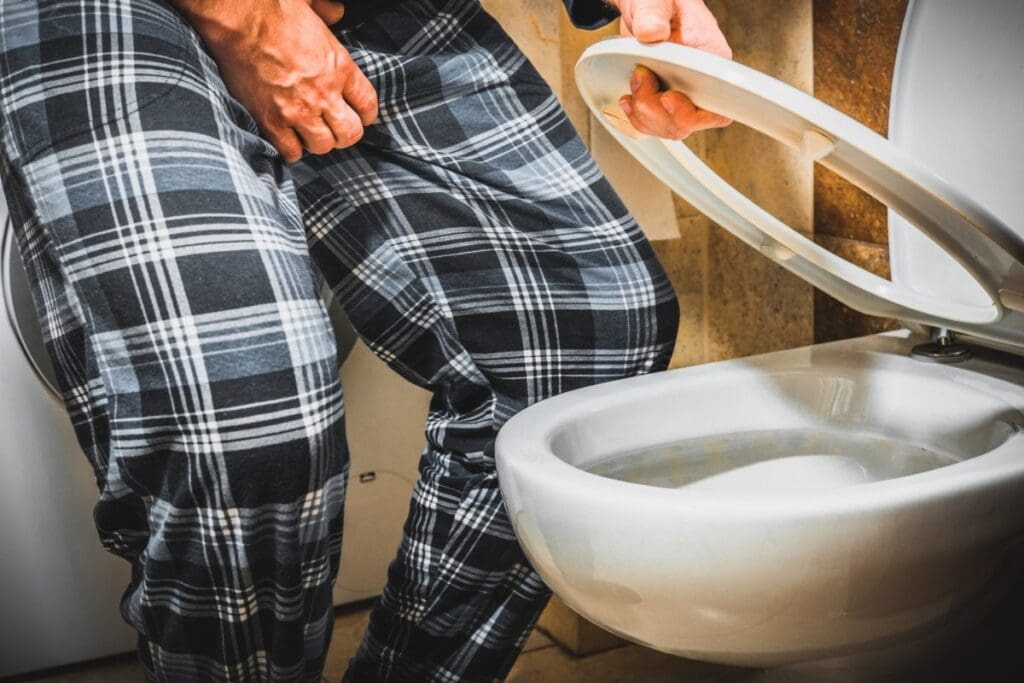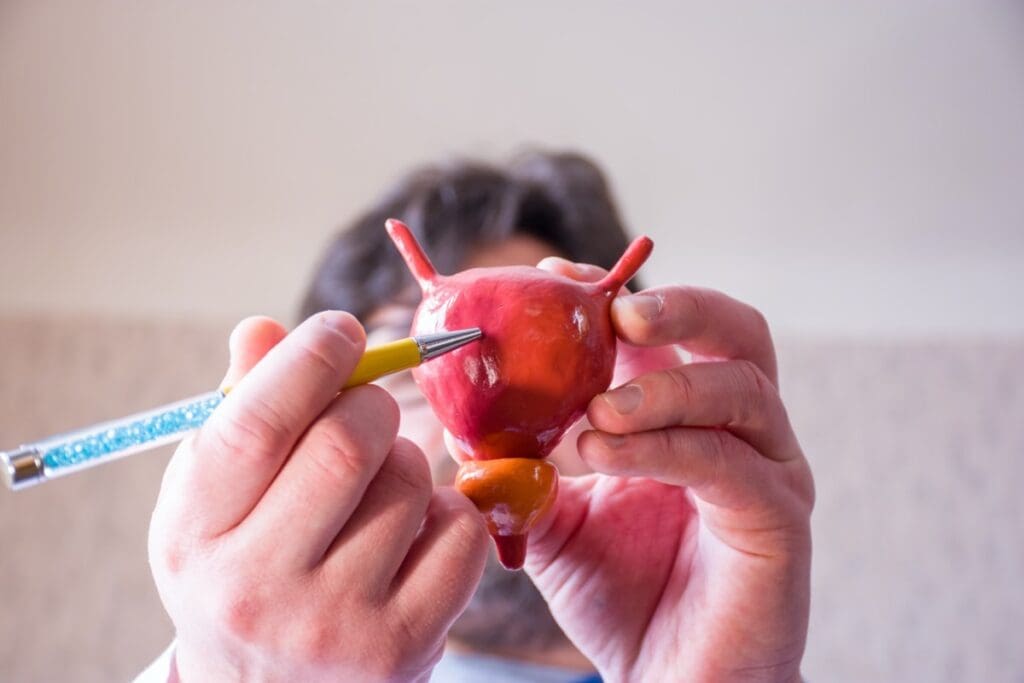Last Updated on November 25, 2025 by
A urinary ultrasound is a quick and noninvasive procedure. It gives vital info for diagnosing and monitoring urinary issues. At Liv Hospital, this Kidney Ultrasound tool shows our commitment to quality care.
A standard urinary ultrasound usually takes 15 to 30 minutes. This time can change based on patient prep, equipment, and the exam’s depth. But it gives patients a clear idea of what to expect.

Knowing how long a urinary ultrasound takes can ease anxiety. It makes the experience smoother for patients. This tool is key for healthcare pros to make the right care decisions.
Urinary ultrasound procedures are non-invasive tests that check the urinary system. They use sound waves to create images of the kidneys, bladder, and more. This helps doctors find and diagnose urinary tract problems.
A renal ultrasound, or kidney ultrasound, looks at the kidneys and nearby tissues. It helps spot issues like cysts, tumors, or blockages.
Doctors often use urinary ultrasounds to check for pain, blood in urine, or frequent infections. They also monitor kidney transplant patients and check the urinary system’s health.
There are various urinary ultrasounds, like the USG of kidney focused on the kidneys. Others might look at the bladder or the whole urinary tract, based on the patient’s needs.

A kidney ultrasound is quick, but its time can vary. It depends on several factors. Generally, it’s done within a certain time frame.
The average time for a kidney sonogram is 15 to 30 minutes. This allows the sonographer to get the needed images. They check the kidneys and nearby areas well.

Routine scans usually just look at the kidneys and are quicker. But, scans that also check the bladder ultrasound and other areas take longer. The scan’s complexity decides how long it lasts.
In emergencies, the kidney sonogram is done fast, focusing on urgent findings. Scheduled ultrasounds follow a set plan, taking the full time. Research shows that quick bladder ultrasound can help diagnose and treat faster. This shows how important ultrasound tech is in healthcare.
The time needed for a urinary ultrasound can vary. Knowing what affects it helps patients prepare better.
Things about the patient can change how long an ultrasound takes. For example, how big and what the body is made of can impact image quality. Also, if there are kidney cysts or other issues, it might take longer to check them all.
The ultrasound machine’s type and quality matter too. Newer machines with better tech can make exams shorter. The skill of the sonographer doing the kidney cyst ultrasound also plays a big role in how fast it goes.
How complex the exam is also affects its length. For example, a KUB (Kidneys, Ureters, and Bladder) scan, which looks at more areas, might take longer. If the images need to be very detailed or if there are extra challenges, it can take even longer.
Some main things that can change how long an ultrasound takes include:
Getting ready for a urinary ultrasound is key for a smooth process. Good preparation means the test can be done on time. It also helps get accurate results.
Drinking lots of water before the test is important. Patients need to have a full bladder. This is vital for a clear kub ultrasound image.
A full bladder is essential for a good urinary ultrasound. It moves the intestines away from the bladder. This gives a clearer image during the normal USG test.
Preparation time can differ for various patients. Kids might need special care, while older adults might need help because of mobility issues.
Knowing what to expect during a urinary ultrasound can help reduce anxiety. This non-invasive test is key for spotting issues in the urinary tract. It’s used to find kidney stones and other problems.
The ultrasound starts with you lying on an exam table. A gel is applied to your skin to help sound waves move. Then, the ultrasound transducer is moved over the area to capture images of your urinary tract.
You might be asked to lie on your back or side, depending on what’s being checked. The sonographer might ask you to hold your breath or move to get the best pictures. Your comfort is important, so let them know if you’re feeling any pain.
One great thing about urinary ultrasound is that it shows images in real-time. The sonographer can see the images and make changes as needed. This helps them accurately spot issues like ultrasound and kidney stones.
By knowing what happens during a urinary ultrasound, you can feel more ready. This can help lower your anxiety and make the experience smoother.
Point-of-care bladder ultrasounds have made diagnosing faster in urgent care situations. These portable tools give quick and precise checks. They are vital in emergencies where every second counts.
Portable ultrasound tech has changed how doctors do exams. These small, easy-to-use devices let healthcare workers do point-of-care bladder ultrasounds right at the bedside. This cuts down on the need to move patients to radiology.
In emergencies, fast patient checks are key. Point-of-care bladder ultrasounds are a big plus because they’re quick. They help doctors make fast decisions and act fast, which is great for patients with urgent bladder problems.
Point-of-care bladder ultrasounds have many benefits, but knowing their accuracy and limits is important. Research shows they’re very good at measuring kidney or bladder sizes. Yet, they might not show as much detail as a full ultrasound in a radiology lab. It’s key to understand the kub meaning medical (Kidney, Ureter, Bladder) to know what these ultrasounds aim to find.
The time needed for urinary ultrasounds can change a lot based on the condition. These scans are key for spotting and tracking many urinary issues. This includes kidney stones and urinary incontinence.
Kidney stones need a close look to see their size, where they are, and how they might affect the urinary system. A retroperitoneal ultrasound or us retroperitoneal complete scan is often used. It looks at the kidneys and the area around them. This makes the scan take longer because it needs to be very accurate.
Ultrasounds are used to check the bladder for any oddities like thickening or growths. The scan looks at how thick the bladder wall is, finds any lumps, and checks the bladder’s health. This detailed check can make the ultrasound take longer.
Ultrasound can help figure out urinary incontinence by looking at how the bladder works and finding any issues. It checks the amount left in the bladder after urinating and the thickness of the bladder wall. This info is important for figuring out the cause and how to treat it.
In short, the type of urinary issue affects how long and detailed an ultrasound will be. Knowing this can help patients get ready for their scan and understand what to expect.
Urinary ultrasounds, like kidney ultrasounds, are key in finding and tracking urinary issues. How long they take can change based on a few things. These include the patient’s health, the tech used, and how complex the scan is.
Liv Hospital is all about quality and keeping up with the latest in healthcare. They use top-notch ultrasound tech. This means they can give accurate and quick diagnoses. This helps doctors give patients the best care they can.
To wrap it up, knowing about urinary ultrasounds can make patients feel better. It helps them understand what’s happening during the scan. Choosing a place like Liv Hospital means patients get top-notch care.
A renal ultrasound is a non-invasive test. It uses sound waves to create images of the kidneys and urinary tract.
It usually takes 15 to 30 minutes. This depends on how ready the patient is, the equipment, and the exam’s details.
It checks the bladder for issues like urinary retention and bladder wall problems. It also helps with urinary incontinence.
A kidney cyst ultrasound focuses on kidney cysts. It looks at their size and characteristics. This might need more imaging or follow-up.
KUB means Kidneys, Ureters, and Bladder. It’s the area examined during a KUB ultrasound or X-ray.
It’s a detailed ultrasound of the retroperitoneal space. It looks at the kidneys, adrenal glands, and surrounding tissues.
Ultrasound is great for finding kidney stones. It shows the stones’ size and location. This helps doctors decide how to treat them.
You might need to drink water and have a full bladder. Other prep steps depend on the exam type and patient needs.
Yes, bladder ultrasounds can be done quickly in emergencies. They’re a fast way to diagnose and manage urinary issues.
More complex exams take longer. They might need more images, measurements, or checks.
Subscribe to our e-newsletter to stay informed about the latest innovations in the world of health and exclusive offers!